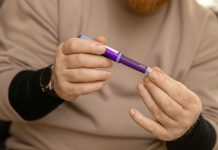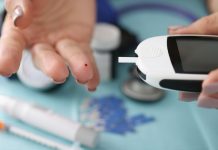
Stem cells are a bit like superheroes. They can change into different types of cells when needed. Imagine if we could use this superpower to help people with diabetes.
Scientists at Weill Cornell Medicine have found a way to do this using stem cells from our stomachs.
Transforming Stomach Cells
In their study, they took stem cells from human stomach tissue. They changed these cells into cells that produce insulin, just like cells in our pancreas do.
Insulin is a hormone that helps control our blood sugar levels. Without it, we could get diabetes.
They even tested these cells in a mouse model of diabetes. Guess what? The mouse’s diabetes symptoms got better. This means their idea might work for humans too!
Implications for Treating Diabetes
This is a great start in finding a new way to treat type 1 diabetes and severe type 2 diabetes. Why is this important?
Well, about 1.6 million Americans have type 1 diabetes. This happens when their own bodies destroy the insulin-making cells in their pancreas.
Millions of others have severe type 2 diabetes. They don’t have enough of these insulin-making cells.
Right now, they have to take insulin injections, which can be painful. They might also need to use an insulin pump, which can be uncomfortable.
Scientists hope to fix this problem in a more natural way. They want to transplant cells that work like insulin-making cells into patients.
These cells could be the patient’s own, so they won’t reject the transplant.
The Journey of Discovery
Dr. Joe Zhou, the lead scientist, has been chasing this dream for over 15 years. He found out that regular cells from the pancreas can be turned into insulin-making cells.
All he needed to do was switch on three transcription factors. These are proteins that control how genes work. Turning these on caused the genes needed for insulin-making cells to spring into action.
Later, in 2016, his team found out something interesting. Stomach stem cells could also be turned into insulin-making cells using the same method.
They also found that human stomach stem cells could be collected quite easily from patients in a simple outpatient procedure.
The Next Step: Mini Organs and Diabetes Treatment
In a recent study, they converted human stomach stem cells into insulin-making cells. They grew these cells into tiny clusters called organoids.
They found that these organoids started making insulin in response to glucose, a type of sugar.
When these organoids were put into diabetic mice, they behaved just like real insulin-making cells in the pancreas. They kept working for six months, which is a good sign.
However, there are still challenges to overcome before this method can be used in people. The process needs to be improved and scaled up.
The new insulin-making cells also need to be made less likely to be attacked by the immune system, which is a problem in type 1 diabetes.
Looking Forward
The scientists’ ultimate goal is to make treating diabetes easier. They hope to take stem cells from patients’ stomachs. Then they’ll transform these cells into insulin-making organoids.
Weeks later, these organoids could be transplanted back into the patients. They would control blood sugar levels without any more medication. This could be a game-changer in diabetes treatment.
If you care about diabetes, please read studies about new way to achieve type 2 diabetes remission, and one avocado a day keeps diabetes at bay.
If you care about health, please read studies about vitamin K deficiency linked to hip fractures in old people, and these vitamins could help reduce bone fracture risk.
The study was published in Nature Cell Biology.
Copyright © 2023 Knowridge Science Report. All rights reserved.



